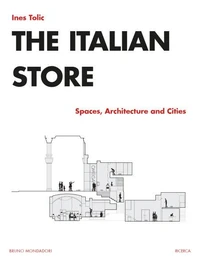In recent decades, the needs related to luxury shopping have fostered the creation of innovative architectures in terms of shape, materials and content. The phenomenon is inextricably linked to fashion, which with its places (flagship stores, fashion districts and so-called 'fashion capitals') and its manifestations (fashion weeks, exclusive events and exhibitions for the general public) is actively contributing to shape the face of contemporary cities.
So it is not surprising that today the relationships between consumption and architecture on the one hand and fashion and cities on the other are garnering an increased level of attention from scholars. Starting from the existing bibliography, this research uses unpublished archive materials to delve into the case study of the Maison Hermès of Tokyo, a flagship store that began in the last years of the 20th century and was completed in the new millennium.
The result of a partnership between the French fashion house and the Renzo Piano Building Workshop, the work is analysed at its various scales, from the glass bricks to the city, with the aim of shedding light on the peculiarities of the creative method and the construction process that made it possible. Moreover, the essay uses the case study to explore some of the most unstable equilibria of the beginning of the century, focusing on the changing forces that still govern the relationships between culture and the market, between tradition and globalisation, between history and the future.
In recent decades, the needs related to luxury shopping have fostered the creation of innovative architectures in terms of shape, materials and content. The phenomenon is inextricably linked to fashion, which with its places (flagship stores, fashion districts and so-called 'fashion capitals') and its manifestations (fashion weeks, exclusive events and exhibitions for the general public) is actively contributing to shape the face of contemporary cities.
So it is not surprising that today the relationships between consumption and architecture on the one hand and fashion and cities on the other are garnering an increased level of attention from scholars. Starting from the existing bibliography, this research uses unpublished archive materials to delve into the case study of the Maison Hermès of Tokyo, a flagship store that began in the last years of the 20th century and was completed in the new millennium.
The result of a partnership between the French fashion house and the Renzo Piano Building Workshop, the work is analysed at its various scales, from the glass bricks to the city, with the aim of shedding light on the peculiarities of the creative method and the construction process that made it possible. Moreover, the essay uses the case study to explore some of the most unstable equilibria of the beginning of the century, focusing on the changing forces that still govern the relationships between culture and the market, between tradition and globalisation, between history and the future.

 , qui est-ce ?
, qui est-ce ?